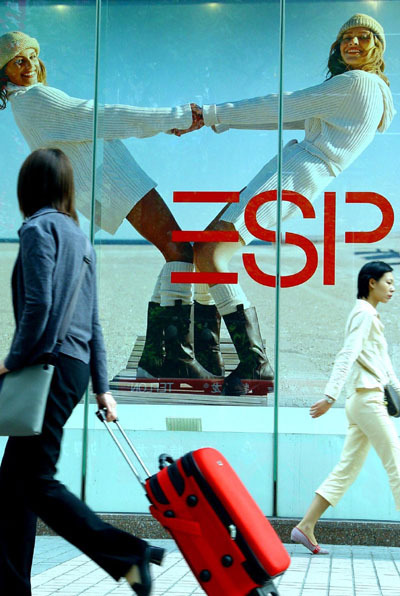
Shop confronts the fact it's facing tough competition in the modern marketplace
Wang Yueqi, a 28-year-old Shanghai white-collar worker, visited an Esprit-branded store in Shanghai in August but left empty-handed.
"The design was outdated and the colors weren't great. Some of the clothes I think were designed for older people, not for the young," said Wang. "Compared with other fashion brands, the price is not competitive. For those prices I think I can get better products from 'fast' fashion stores"
|
 |
|
An Esprit store in Shanghai. Esprit has seen its turnover decline in recent years globally although the company spared no effort in trying to lure customers back. [Photo/China Daily] |
Wang had been a fan of the Hong Kong-listed fashion and lifestyle brand since she was in high school. Over the past few years, she has visited Esprit stores several times a year to buy clothes for the upcoming seasons. However, she now says her interest in the fashion brand is diminishing because she "cannot find something that is distinctive and unique". Often she visits just out of habit and does want to buy anything.
Wang said she would rather visit Zara or H&M to buy the latest designs. Wang could be described as typical of the balinghou, those born in the 1980s who used to be loyal to Esprit but have now switched to other brands.
Many people in Shanghai may remember the grand opening of the Esprit flagship store in Shanghai Citic Pacific Square on West Nanjing Road in 2001, which was attended by many celebrities. It closed without fanfare in August without an official reason being given.
"The key problem faced by Esprit is brand aging and a lack of a trendy image. Customers are sick of seeing so many similar designs and patterns year in, year out. It makes it difficult to lure customers back," said Zhu Meng, a consultant with Adfaith Management Consulting.
Ronald Van Der Vis, former group chief executive officer of Esprit who resigned in June, noted in its 2011 annual report that Esprit's "value and heritage were neglected in the process of fast growth and expansion".
The arrival of "fast" fashion brands such as Zara and H&M also took custom away from Esprit stores. In Shanghai, people can find Zara stores close to Esprit stores.
"Those fast fashion brands offer customers a wider range of choices and maintain a good stock turnover ratio, which makes it hard for Esprit to compete," said Zhu.
Esprit has seen its turnover decline in recent years globally although the company spared no effort in trying to lure customers back. From 2011 to 2012, group turnover declined by 10.5 percent to HK$ 30.1 billion ($3.88 billion) by June 30. The turnover from the Chinese market fell by 3.3 percent year-on-year.
"To overcome the problem Esprit must add new elements into the brand and design and upgrade existing sales points," said Zhu from Adfaith.
The company has announced what it calls a transformation plan to give it a "wake up kiss" in 2011. This covers a wide range of changes including refurbishing existing stores, closing unprofitable outlets and creating more fashionable collections.
In addition, the company will continue its expansion plan in China. It said in its latest annual report that "stepping up our efforts to accelerate growth will be our top priority in the country".
On Oct 18, Esprit launched its first icon store in Solana Lifestyle Shopping Park in Beijing to create a more exciting shopping experience for customers.
"Under the new management team in China, much more effort has been put into improving store productivity, building key organizational capabilities and devising short-term and long-term initiatives to support the transformation," said the company in its latest financial report released on Oct 17.
tangzhihao@chinadaily.com.cn